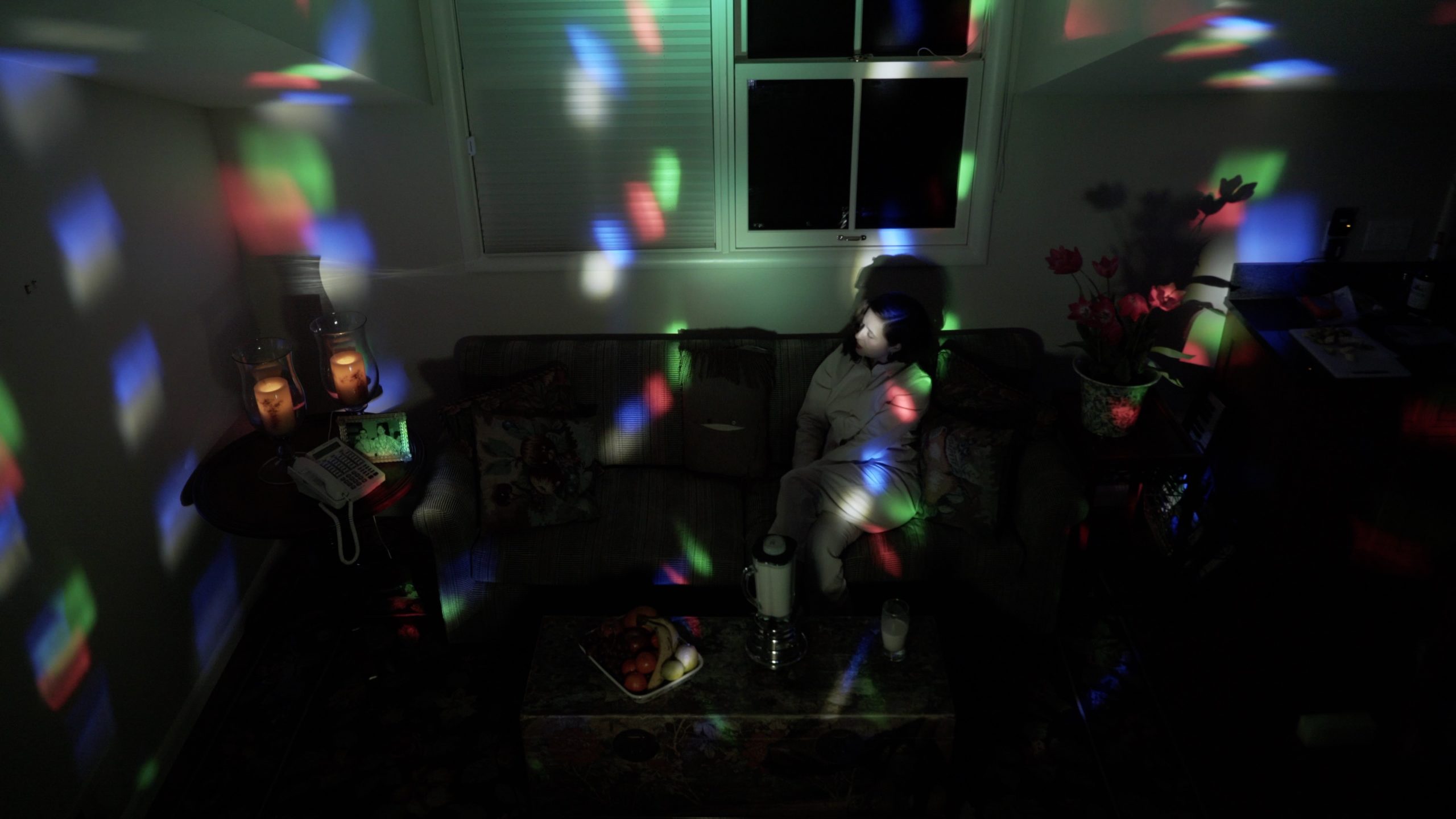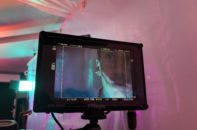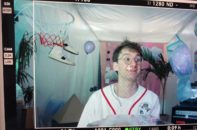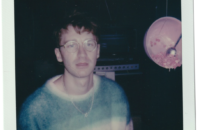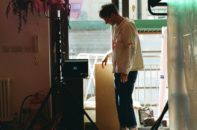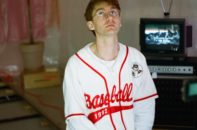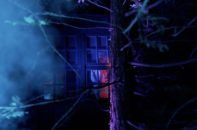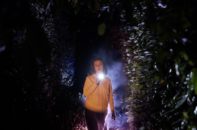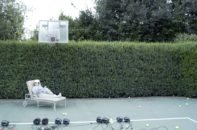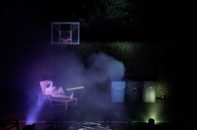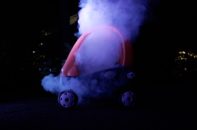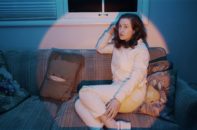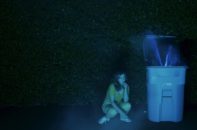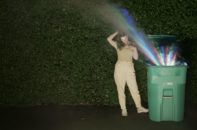Like everyone else right now, Evanescence frontperson Amy Lee is stuck at home. But unlike many people, she and her bandmates have filmed a music video capturing how quarantine has impacted their everyday lives. And like several other musicians and directors, the band is using a music video made during quarantine—and under social distancing guidelines—to speak to both their music’s themes and the current global state.
“I was in a mode of my own isolation before the world shut down and it became mandatory,” Lee tells me about Evanescence’s song “Wasted on You” and its video, which the band members filmed at their individual homes, on their iPhones, in quarantine. She describes the song as partially about feeling “numb and disconnected because it’s easier than fighting,” a relatable sentiment as quarantine and police violence remind people about the value of friendships and relationships, the extreme and consolidated power of governments, and the inhumanity of longstanding societal constructs.
The “Wasted on You” video, though, reflects not disconnection, but how innovatively people have stayed connected. It’s a prime example of the unprecedented creative strides musicians and directors have made in crafting well-produced, engaging music videos while in quarantine—videos so high-quality they’re not always obvious products of stay-at-home orders.
“We wanted to create a sense of all the members being together even though quarantine made that impossible,” says “Wasted on You” director P. R. Brown. “It was all about tapping into the emotions of being confined. We wanted this to be authentic and a look at what [the band members] were truly going through.” To that end, the video features shots of the band members looking despondent around their homes, spending time with their families and pets, and playing their instruments.
The events are sequenced to imply the band members’ togetherness despite their distance, and the footage at most faintly attests to social distancing save one direct nod to COVID-19. In the video’s most jarring scene, Lee disinfects a home delivery, a moment Brown describes as “a brilliant gift [Lee] did all on her own.” Save this one overt reference to the pandemic—a rarity among quarantine music videos—the clip’s stay-at-home origins are all but masked thanks to how well-shot and high-quality it is.
Not that Evanescence’s members are filming experts. During the video shoot, Brown “talked to each band member on FaceTime and walked them through the basics of filming.” Not being physically present proved at once a new challenge for Brown—“I am used to having control of what is filmed and shown,” he says, and “not having that ability terrified me”—and the video’s most unexpected success. “It turned out so much better because [the band members] were in control of their own reflection of the time,” he says. “It feels way more authentic than [what] I could have ever filmed myself.”
Across the pond in the U.K., Glass Animals frontman Dave Bayley also shot an at-home quarantine music video with a remote director. In Bayley’s case, though, director Colin Read was located all the way across the Atlantic in Florida, and the timezone differences weren’t the shoot’s only challenges. Read’s music video treatment for “Dreamland,” a single from Glass Animals’ upcoming album of the same name, required two large shipments delivered to Bayley’s house in London—but given the entire ocean separating musician and director, Read wasn’t at the shoot, leaving Bayley to assemble the set and lighting fixtures himself.
“I had to haul ass for two and a half days,” Bayley says. These two and a half days comprised Bayley carrying hefty lighting equipment—the first shipment—up two flights of stairs. A second shipment included extra set materials that weren’t nearly as heavy. Then, Bayley had to actually construct the set.
After all this labor, filming took just one evening, but the memories of it will last literally forever: The back half of the video is a time-lapse, behind-the-scenes look at Bayley constructing and deconstructing the set. Through the video’s two parts, Bayley comments on the nature of memory, which is among Dreamland’s dominant themes. It’s also something quarantine can deeply distort.
“When you don’t know what the future is and you’re not out making new memories,” Bayley says, “you have to cherish the old ones. You live off them.” He describes the purple-hued, faintly psychedelic first half of the “Dreamland” video as both a “tunnel of memories” comprising objects from Dreamland’s artwork and a treatise on how quarantine has warped memory. Both he and Read also wanted the video to blatantly show the challenges of music video creation in quarantine.
“I tried to step back and look at the world’s restrictions right now,” Read says, and he deftly showcases the pandemic’s challenges for creators while tying back to Dreamland’s themes. “Without showing the [set creation] process,” says Read, “I don’t think this video would have nearly as much of its power.” These behind-the-scenes moments show that Bayley put in an immense amount of physical work, and neither he nor Read has any regrets: “We were ambitious and pushed the limit of breaking this man,” says Read, “but I think it paid off.”
- Dave Bayley BTS “Dreamland” video shoot
- Dave Bayley BTS “Dreamland” video shoot
- Dave Bayley BTS “Dreamland” video shoot
- Dave Bayley BTS “Dreamland” video shoot
- Dave Bayley BTS “Dreamland” video shoot
- Dave Bayley BTS “Dreamland” video shoot
- Dave Bayley BTS “Dreamland” video shoot
- Dave Bayley BTS “Dreamland” video shoot
- Dave Bayley BTS “Dreamland” video shoot
- Dave Bayley BTS “Dreamland” video shoot
- Dave Bayley BTS “Dreamland” video shoot
The challenges Bayley and Read faced aren’t unique to remote video shoots. Although electropop artist Jessy Lanza and director Winston Case are partners quarantining together in Case’s childhood home, the challenges of social distancing and set-building still manifested during their quarantine shoot for Lanza’s “Face” video. Case describes these limitations as “always my worst nightmare scenario for music videos,” but when he had no choice other than to film this way, he found it “kind of fun.”
“Every video, I try to make it more thought-out than the last, [but] the limitations forced me not to overthink it,” he says. That’s why the “Face” video isn’t full of standard set props, heavy plot, or choreography, but rather everyday activities and household locations brought to life with intense lighting, abundant fog machines, and Case’s expert filming.
“It was a good way to show our quarantine life…[and] a good reflection of what our life was like in this moment.” Case says. Lanza agrees: “It’s a magnifying glass to all the mundane aspects of our life,” she says.
Not that the “Face” video is boring in the least. Case’s directing turns his childhood home into a rave as self-isolated and domestic as it is colorful and swirling. Throughout the video, Lanza—dressed more like a lab researcher than a pop star—and a face-shaped pillow named Ruben together make driving aimlessly in Lanza’s longtime tour van, grilling vegetables in a garage, and just chilling on the couch seem like the ultimate party.
As Case and Lanza figured out how to transform their quarantine digs into a music video set, Lanza says their mindset was, “This is what we have to work with. We’re just gonna do this.” For Case, this meant “looking at all the little toys I’d bought from previous [music videos and live shows] and how I could repurpose them.”
- BTS Jessy Lanza’s “Face” video shoot
- BTS Jessy Lanza’s “Face” video shoot
- BTS Jessy Lanza’s “Face” video shoot
- BTS Jessy Lanza’s “Face” video shoot
- BTS Jessy Lanza’s “Face” video shoot
- BTS Jessy Lanza’s “Face” video shoot
- BTS Jessy Lanza’s “Face” video shoot
- BTS Jessy Lanza’s “Face” video shoot
When Case needed more lighting equipment, he “supplemented what we brought from New York with the cheapest stuff” he could find online, whether film lights or a blinding green light normally used for, yes, feral hog hunting. “We paid the price,” he says, “because Jessy spent twice as long programming the lights because they were off-brand.” Lanza, for her part, brushes these issues off: “They were a little finicky,” she says, “but they worked.”
If anything that’s finicky but functional defines quarantine, it’s the now-ubiquitous group video chat app Zoom. That’s where Thao & the Get Down Stay Down’s “Phenom” video—which shatters the limits of socially distant choreography—takes place. Frontperson Thao Nguyen and several professional dancers achieve seemingly impossible Zoom grid feats: In one scene, dancers in the top row pour water to those at the bottom. In another, everyone aligns their limbs into one flexing body. What makes their accomplishments even more remarkable is that, while filming, none of the dancers had the same view of the grid.
“The dancers couldn’t see the shape they were making,” says Erin S. Murray, who choreographed the “Phenom” video and co-directed it with Jeremy Schaulin-Rioux. For scenes such as the full-body flex, she had to “one by one explain where the arm needed to come out, and it was super tedious.” She, Schaulin-Rioux, and producer Victoria Fayad were ultimately able to figure out a sign-on order that gave themselves and the viewers, but not the dancers, the intended grid.
Nguyen, too, played a central role in the video’s genesis (and is literally in the Zoom grid’s center). She asked Murray to preserve “elements of unity, but disdain and frustration and being driven to mania” from the choreographer’s pre-pandemic treatment, which involved a traditional in-person shoot. Not that quarantine proved to be such a bad backdrop for the video.
“It relates [to the pandemic] more than I would want,” Ngyuen says of not just the “Phenom” video, but the track itself. “The song is an imaging of a near-future dystopic world wherein time is collapsed,” she says, and on Zoom, she could “embody her frustration” with today’s dystopia “because everyone is trapped within a grid, and we’re trapped in our homes, and we cannot enact justice or correct what is happening because we don’t have that power.” Although Murray says she “didn’t feel like I was making a video about coronavirus and quarantining,” Nguyen’s perspective makes the parallels difficult to ignore.
Even if Murray didn’t aim to directly address the pandemic, she’s in on a big quarantine creativity secret. It turns out the “Phenom” video’s water-pouring scene is partially the work of a classic pre-quarantine trick: editing in post. “We tried it with the dancers [in the bottom row] pouring water on themselves, but you couldn’t see the water very well,” she says, hence the need for this post edit. Her confession in no way lessens the video’s impact: “I don’t think you can tell,” she says, “and that’s what matters, right?” FL

